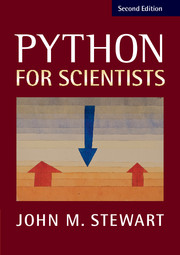3653 results in ebooks in fluid mechanics
5 - Steady Flow in Leaky Aquifer Systems
-
- Book:
- Analytical Groundwater Mechanics
- Published online:
- 30 August 2017
- Print publication:
- 07 August 2017, pp 134-187
-
- Chapter
- Export citation
4 - Two-Dimensional Flow in the Vertical Plane
-
- Book:
- Analytical Groundwater Mechanics
- Published online:
- 30 August 2017
- Print publication:
- 07 August 2017, pp 121-133
-
- Chapter
- Export citation
List of Problems with Page Numbers
-
- Book:
- Analytical Groundwater Mechanics
- Published online:
- 30 August 2017
- Print publication:
- 07 August 2017, pp 428-429
-
- Chapter
- Export citation
7 - Transient Flow
-
- Book:
- Analytical Groundwater Mechanics
- Published online:
- 30 August 2017
- Print publication:
- 07 August 2017, pp 194-217
-
- Chapter
- Export citation
3 - Steady Interface Flow
-
- Book:
- Analytical Groundwater Mechanics
- Published online:
- 30 August 2017
- Print publication:
- 07 August 2017, pp 104-120
-
- Chapter
- Export citation
6 - Three-Dimensional Flow
-
- Book:
- Analytical Groundwater Mechanics
- Published online:
- 30 August 2017
- Print publication:
- 07 August 2017, pp 188-193
-
- Chapter
- Export citation
References
-
- Book:
- Analytical Groundwater Mechanics
- Published online:
- 30 August 2017
- Print publication:
- 07 August 2017, pp 430-433
-
- Chapter
- Export citation

Python for Scientists
-
- Published online:
- 02 August 2017
- Print publication:
- 20 July 2017

Writing Undergraduate Lab Reports
- A Guide for Students
-
- Published online:
- 31 July 2017
- Print publication:
- 27 July 2017
Part III - Crafting the Final Version
-
- Book:
- Writing Undergraduate Lab Reports
- Published online:
- 31 July 2017
- Print publication:
- 27 July 2017, pp 47-62
-
- Chapter
- Export citation
Dedication
-
- Book:
- Writing Undergraduate Lab Reports
- Published online:
- 31 July 2017
- Print publication:
- 27 July 2017, pp v-vi
-
- Chapter
- Export citation
Part I - Introduction
-
- Book:
- Writing Undergraduate Lab Reports
- Published online:
- 31 July 2017
- Print publication:
- 27 July 2017, pp 1-10
-
- Chapter
- Export citation
5 - Results
- from Part II - Writing the First DraftFormat
-
- Book:
- Writing Undergraduate Lab Reports
- Published online:
- 31 July 2017
- Print publication:
- 27 July 2017, pp 31-35
-
- Chapter
- Export citation
Further Reading
-
- Book:
- Writing Undergraduate Lab Reports
- Published online:
- 31 July 2017
- Print publication:
- 27 July 2017, pp 85-85
-
- Chapter
- Export citation
Part II - Writing the First DraftFormat
-
- Book:
- Writing Undergraduate Lab Reports
- Published online:
- 31 July 2017
- Print publication:
- 27 July 2017, pp 11-46
-
- Chapter
- Export citation
7 - Title and Abstract
- from Part II - Writing the First DraftFormat
-
- Book:
- Writing Undergraduate Lab Reports
- Published online:
- 31 July 2017
- Print publication:
- 27 July 2017, pp 42-46
-
- Chapter
- Export citation
10 - Transitioning to Writing about Original Research
- from Part IV - The Anatomy of Scientific Papers
-
- Book:
- Writing Undergraduate Lab Reports
- Published online:
- 31 July 2017
- Print publication:
- 27 July 2017, pp 65-82
-
- Chapter
- Export citation
2 - Starting to Write
- from Part II - Writing the First DraftFormat
-
- Book:
- Writing Undergraduate Lab Reports
- Published online:
- 31 July 2017
- Print publication:
- 27 July 2017, pp 13-16
-
- Chapter
- Export citation
Copyright page
-
- Book:
- Writing Undergraduate Lab Reports
- Published online:
- 31 July 2017
- Print publication:
- 27 July 2017, pp iv-iv
-
- Chapter
- Export citation
9 - References
- from Part III - Crafting the Final Version
-
- Book:
- Writing Undergraduate Lab Reports
- Published online:
- 31 July 2017
- Print publication:
- 27 July 2017, pp 58-62
-
- Chapter
- Export citation
